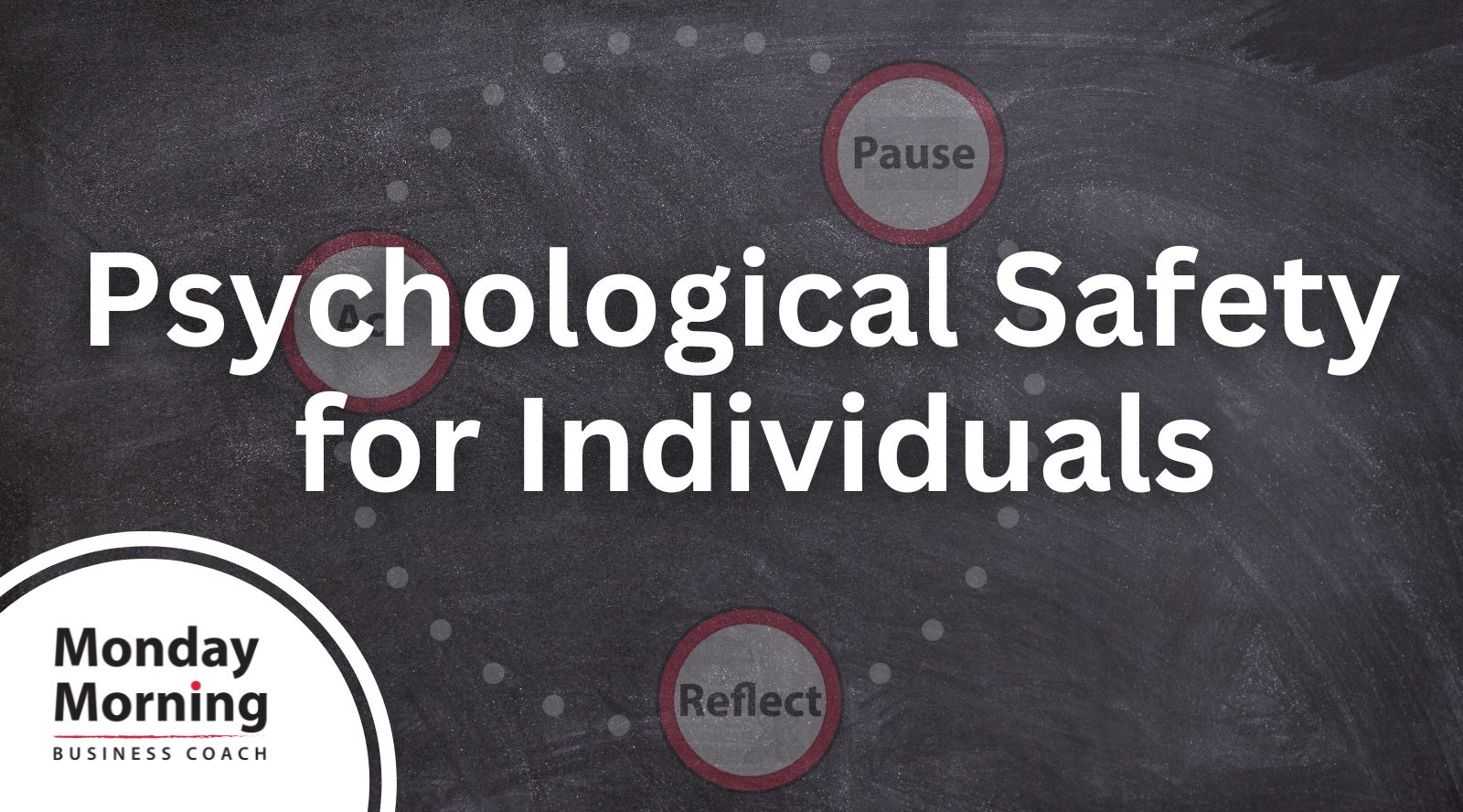Last week, we shared an example of how one of our executive clients uses our Leader in You® framework, can support you in creating a sense of trust and psychological safety with the people in your lives.
But what if you’re not the leader or manager?
A few of you wrote to us recently asking questions like, “I’m not in an official management role but I’d still like to create psychological safety on my team and with my colleagues. Is that possible or do I have to rely on the people in management to do it?”
We’re so glad you asked! Let’s take a look at our definition of leadership again,
Leadership is the willingness to influence your world
and the willingness to allow your world to influence you,
regardless of your role or title.
We believe that our very definition of leadership can support everyone in creating psychological safety—at every level. Since leadership can happen regardless of role or title it can be integrated into every single individual’s behavior throughout the organization.
To support you, we’re sharing some examples of how our clients, as team members, have worked to create psychological safety using various Leader in You steps.
Pat – Pause and Possibility Mindset
Pat used to get caught in a downward spiral and become overly negative, when obstacles arose. She was typically unable to see any options of how to move forward and would spend her time ruminating.
She began using the Pause to remind herself that she wanted to lead with a sense of “What’s Possible?” By pausing and asking herself “What’s possible in this current challenge?”, she found that she was able to think bigger and more creatively.
Her coworkers even began joining her in this possibility thinking, which helped to create a sense of we and togetherness.
Nolan – Reciprocal Influence, Pause, and We-Focused
Nolan tends to be very decisive, enthusiastic, and outspoken which sometimes can leave others in the room feeling as if there isn’t opportunity for their thoughts and ideas. His goal is to not only influence people with his thoughts, but to also allow space for them to influence him with their thoughts.
He uses the Pause to remind himself that his goal is to be an inclusive and supportive team member. Nolan keeps a note at the top of his notebook that reads, “Pause, lean back, and be We-Focused.” This serves as a reminder to him to allow others to have a voice in the discussion.
People on the team are learning to trust that their input is welcome and are sharing more ideas and creating better solutions, together.
Nelly – Ownership and Reciprocal Influence
Nelly works at an urgent care clinic where many of the staff are overworked and stressed. Her goal was to create a sense of community with her teammates so that they could feel supported by one another. She invited staff to join her for a 10-minute morning huddle where they could each take Ownership and share their “why” for the work. Quite a few staff joined for the huddle and told her that they enjoyed reminding themselves and others about their passion for the work.
They influenced each other with their thoughts about what type of connection would feel best to each of them. Nelly and the team continued to fine tune the huddle as needs arose. By remaining curious about each other’s needs, they’ve created a safe space to support and uplift each other, despite the whirlwind of work and life.
Jennifer – Pause, Reflect, and We-Focus
Jennifer wanted to work better with Chris, a team member that was seen as negative, outspoken, and would shut other people’s ideas down. Jennifer Paused and reminded herself that her goal was to create a space where Chris (and others) felt that he could trust others on the team to “have his back” and hopefully engage and collaborate more.
She Reflected and reminded herself that when she felt safe, she’d get curious with people (versus shutting down). Additionally, she Reflected on why Chris might be getting so loud and defensive. He’d worked there quite a while and seemed to hate when people wanted to improve/change existing processes. Jennifer guessed that if she could listen and remain open after Chris gave his feedback, perhaps he’d remain open to their thoughts.
Jennifer pictured herself having a We-Focus, and said, “I appreciate your input, Chris. It sounds like you may have a different take on the situation, and I’m curious to understand your views better. Your history with the company is important and it would be great if we could take the best of your input and the best of others’ input and create something even better, together.”
It didn’t go perfectly at first, but she kept putting these steps into practice. Jennifer started to see Chris connecting with the team in a less defensive and more collaborative way. The team had better conversations and created more successful solutions together because they felt that they were able to share their ideas openly and without judgement.
As you can see from our examples above, using various combinations of our Leader in You framework will support you in creating a foundation of trust and psychological safety on your team.
Consider how you want to show up as a leader in your world and where you feel challenged. Then, look through our Leader in You framework and find the steps that can support you in being your best so that you can support others in being at their best.
When people feel a sense of safety and trust,
they show up fully.
They share successes, challenges,
and differences of opinion with one another,
because they can trust that the relationships
will remain intact.
Let us know how you’ve been using the Leader in You steps to create success!
If you’d like support
to create psychological safety on your team
contact us today.


